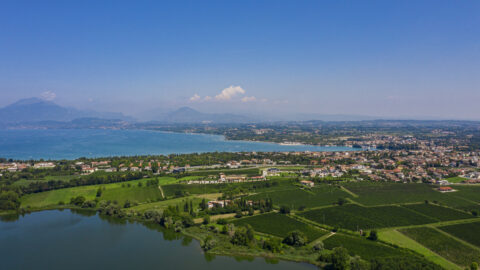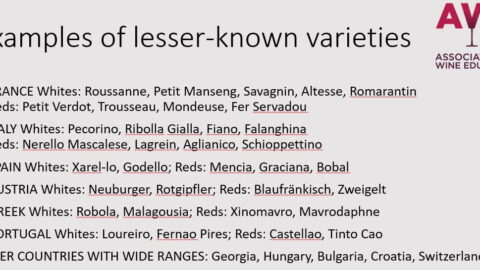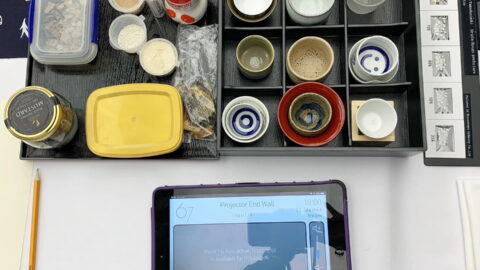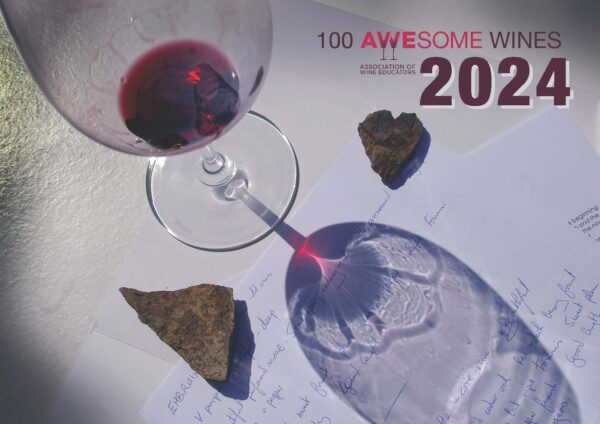Notes from an AWE Sake lecture given by Marie Cheong-Thong
Usually, as AWE members, we are trying to help enthusiastic wine novices decipher wine labels so they can buy with more confidence. The table were turned this week. Sake, rice wine, bottle labels are covered in Japanese Kanji (script) so a group of AWE members were reminded of how it feels to be unable to decode a label. Marie Cheong-Thong, a Sake Master, took us through what sake is, its history, how it is made, sake’s different styles plus what to look out for on a label to help us choose a good sake.
Sake is polished rice that has been fermented with one of several distinct sake yeasts. The rice is special short-grained sake rice. Associated with Japan, actually they improved a technique which came over from China in the 3rd century. Sake is made in other places throughout the world, including Norway, Brazil and surprisingly starting up in the UK both near Cambridge and Glasgow. There are moves to protect the name of Sake to refer to only rice wine made in Japan.
Not all of the grain of rice is used in the production process. The outside of the grain contains fats, proteins and the husk which need to be removed using a polishing process. This reveals the starchy core of the rice grain. (The outside by-product is not wasted as it can be used in cooking or for animal feed.) Polishing rate refers the amount of grain used. The more of the grain that is polished away the cleaner, fruitier plus lighter in style the final sake. When less is polished away more savoury and rice like (cereal) notes are found in the final sake, giving rise to the umami flavours; it also tends to be a fuller bodied style. These may be called a ‘futsushu’ or non premium sake with a 70% polishing rate (ie only 30% of the grain is polished away). This is akin to table wine. Premium sakes are called ‘ginjo’ (60% polishing rate) with the best called ‘daiginjo’, (big-ginjo) where the polishing rate is 50% so only half of the grain or less remains.
In contrast to wine making, where sugary grape juice is readily available for fermentation, washed dry and hard rice grains need to be softened first. This is done by soaking and a controlled steaming, often timed to the second. The softened starch then needs to be converted into sugar. Traditionally this was undertaken by fair maidens chewing the rice then spitting it out. There must be a shortage of young maidens volunteering for this task since now it is done using a rice-based Koji. A koji is rice on which fungus or mould has developed. It contains enzymes capable of converting the starch into sugars: saccharification. Other ingredients used in sake making are yeast and water. Lactic acid is added to control the pH of the mash and to kill harmful bugs while keeping the yeast and the koji in an optimum environment.
Processes tend to be described sequentially. In reality saccharification and fermentation occur simultaneously with sake breweries taking the precaution of a practice run on a small batch first, like a quality control procedure. The yeasted rice mixture, akin to a starter, is combined with lactic acid. This is added to the big tank (mash) containing rice and water. It is kept at a low temperature (8-12 degrees) and fermentation occurs. The tank is not fully filled with the rice, water and koji in one go. Usually 3 additions over a period of about 4 days are made. Fermentation can take anything up to a month depending upon the style required.
When it is just made, unfiltered and unpasteurised, the sake is cloudy like milk and called a ‘nigori nama genshu’ (meaning cloudy or unfiltered, unpasteurized, undiluted). There are many final styles. Alcohol ranges from 8 to 15% (sometimes it is added – sake without added alcohol includes the word junmai on the label).
The more recent sparkling sake, made using the tank method, tasted off-dry with green apples, banana skin accompanied by creamy and hazelnut notes. The cloudy nigori tasted like a combination of milk and apple juice with a bowl of rice krispies finishing with a white pepper spice. As the polishing rate increased (less of the grain was used) the sake became more vinous like, that important note of sweet milk in the background. The least milky and more savoury styled was the koshu, or aged, sake. Here umami mushroom, caramel and nut notes came through; it was reminiscent of the crust on a Victoria sponge sandwich cake, mmm.
Due to the lactic acid and remaining sugar in the sake, good sake needs to be transported and kept chilled. Serving temperatures can vary. As a rule of thumb, better sakes are served colder, but there are exceptions including in the winter when a warm choko (glass) of milky alcohol is de rigueur. And speaking of etiquette, the chokos may be in all different sizes. Someone else should fill it for you. It’s polite to choose a small choko, but don’t worry as they should be filled to the brim.
If you have any comments on this article I would love to hear from you, [email protected].
The AWE sake expert, Marie, is at [email protected]
Tags: marie sake Seminar wine labels






